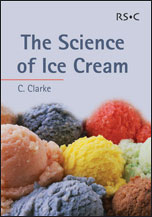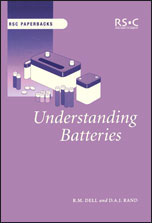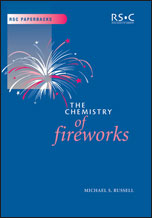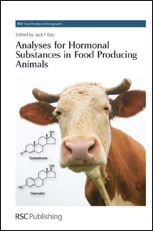Author: Anna Sackmann
Knovel University Challenge
The Knovel University Challenge has begun!
All entries with a total of at least 3 correct answers will be placed into a random drawing for (1) iPad, (1) $500 US cash prize, and (8) $50 Amazon Gift Cards.
The drawing will take place on December 1st, 2010. Good luck!
Earth Resources Observation and Science (EROS) Center

Detail from satellite imagery supplied by the EROS Data Center
The United States Geological Survey (USGS) collects and makes freely available a vast array of earth sciences data that range from aerial photography to satellite imagery, digitized maps to digital elevation models of areas around the globe. The data are available through the USGS Earth Resources Observation and Science (EROS) Center.
Use the Find Data page for access to specific data types, such as land cover data, as well as data discovery tools like EarthExplorer, which allows for combined text and geographic searching. Other search portals are linked from this site as well.
Users are required to register in order to download data. Search results are presented from a variety of sources, depending on the resources sought. Large satellite images and other large files can incur long wait times for downloading, but all data are free and available for reuse.
UCs action re Nature in Chronicle of Higher Ed
Today’s online edition of the Chronicle of Higher Education has an article about UCs negotiations with Nature Publishing Group — “University of California Tries Just Saying No to Rising Journal Costs“
AccessMedicine – Updated Monthly

AccessMedicine is a multi-faceted resource. In addition to its focused resources in clinical medicine, including Harrison’s Online, a major medical resource, access is provided to textbooks in many basic biomedical sciences: anatomy, physiology, biochemistry, microbiology, immunology, biostatistics, microbiology, neurosciences, and more. AccessMedicine contains thousands of images and illustrations; audio and video resources, arranged by body system; consumer health information and health news. This resource is updated monthly. By signing up for a free My AccessMedicine account, you can download content and podcasts to handheld devices.
From ocean depths to the tip of the universe: Treatise on Geochemistry


The study of geochemistry covers a large variety of major subjects that include cosmochemistry, biogeochemistry, organic geochemistry, isotope geochemistry, and regional, environmental, and exploration geochemistry. Treatise on Geochemistry, the first comprehensive work to summarize the state of the field, is an authoritative source on the subject.
Volumes in the set include:
- Meteorites, Comets, and Planets
- The Crust
- The Atmosphere
- Surface and Ground Water, Weathering, and Soils
- The Oceans and Marine Geochemistry
- Sediments, Diagenesis, and Sedimentary Rocks
- Biogeochemistry
- Environmental Geochemistry
Contributors to the Treatise on Geochemistry include Berkeley professors Dr. Ronald Amundson and Dr. William B. N. Berry. The treatise is also available as a ten volume set in the Earth Sciences and Map Library.
RSC eBook Collection
What do these books all have in common?




They are all available online from the Royal Society of Chemistry (RSC) eBook Collection.
The collection contains the full-text of over 800 books spanning 40 years of chemical sciences — with a very broad definition of chemical sciences. Subject areas include environmental, food, biomolecular, materials, and industrial chemistry as well as the more traditional organic, inorganic and physical chemistry. The collection is continually updated and is fully searchable and indexed to chapter level, with all documents provided as PDFs. It is easy to search or browse the collection. Give it a try, you are sure to find something that interests you.
Please note that our license agreement allows users to download a small portion of a book (e.g. a chapter), but not an entire book. Access is not available yet through our library catalog so you must go to RSC’s web site in order to discover and view items of interest.
Organic Reactions trial access

Thanks to a generous donation from Organic Reactions, Inc. and John Wiley, we now have access to the online version of Organic Reactions for the rest of the year. You can browse the collection of over 140,000 reactions by title or reaction type. You can also search the collection by key words, phrase, author or chemical name.
From the Publisher:
Organic Reactions is a comprehensive collection of important synthetic reactions, together with a critical discussion of the reaction and tables that organize all published examples of the topic reactions. Chapters that focus on reactions of current interest are solicited by the board of editors from leading chemists worldwide. The publication process entails a comprehensive peer-review process, ensuring the high quality and attention to detail for which this series is noted. Organic Reactions currently consists of over 140,000 reactions, and will continue to grow annually.
North American Environmental Atlas
The North American Environmental Atlas is a set of maps and GIS data layers of North America, brought together by national geologic, natural resources, and geographic agencies in Canada, Mexico, and the United States, that enables the effective visualization of North American environmental information within the context of the continent.
The project is an ongoing collaboration between Natural Resources Canada, the Instituto Nacional de Estadística y Geografía (INEGI-National Institute of Statistics and Geography), and the United States Geological Survey (USGS), and the Commission for Environmental Cooperation (CEC) to: “enhance awareness of environmental topics of continental scale, add value to other CEC projects, provide a framework for geo-referenced environmental data, and build networks among partner mapping organizations through collaboration on harmonized map layers of mutual interest.”
Print maps are available directly from the site. GIS data layers (raster and vector) are available from the CEC Data Files site. The data files are separated by category: base layers, Ecosytems and Land Cover, Protection of Species and Areas, Pollution and Waste, and Human Influence.
How many chemicals? More than 50M
This September 7, the Chemical Abstracts Service registered the 50 millionth unique chemical substance, arylmethylidene heterocycle. It look CAS 33 years to register the first 10 million chemical substances in 1990, but only nine months to go from 40 million to 50 million — an indication of the accelerated pace of scientific activity. The CAS Registry database is updated daily, so you can always get an up-to-date record count. On November 24, 2009, the count was already up to 51,045,390 organic and inorganic substances.
Chemistry and Chemcal Engineering Library limited access
Due to construction activities, there is limited access to the Chemistry and Chemical Engineering Library from November 18-30. Only the circulation desk, the study carrels and the mezzanine level are available. The reading tables on the main floor are not available. There are no public PCs and no printing capability. You can still photocopy. You can still check out books, return items, access course reserves materials, and study in the carrels and on the mezzanine level. Phones are still functional and we are available to answer reference questions.
The construction wall is now down and you can get a peak at the new seminar rooms. They look great!



